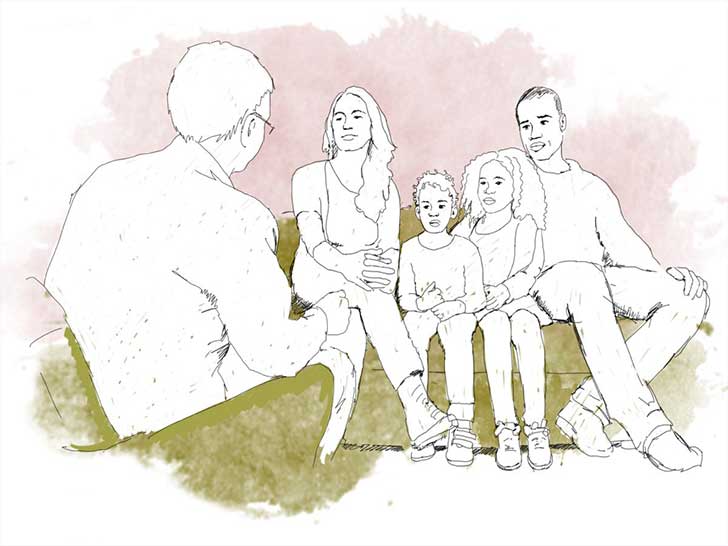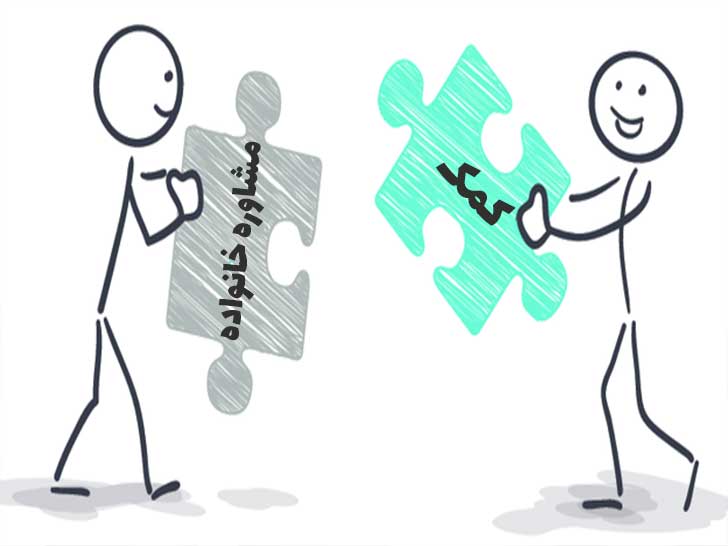اخبار روانشناسی ندای مهر
|
1.*
|
I feel close to members of my family.
|
T
|
F
|
Fam
|
|
2.*
|
I have a lover or spouse (boyfriend girlfriend husband or wife) with whom I can discuss my important problems and worries.
|
T
|
F
|
R/S
|
|
3.
|
I feel I really do not have much in common with the larger community in which I live.
|
T
|
F
|
Gr
|
|
4.
|
I have little contact with members of my family.
|
T
|
F
|
Fam
|
|
5.
|
I do not get along very well with my family.
|
T
|
F
|
Fam
|
|
6.*
|
I am now involved in a romantic or marital relationship where both of us are making a genuine effort at co-operation.
|
T
|
F
|
R/S
|
|
7.*
|
I have a good relationship with most members of my immediate family.
|
T
|
F
|
Fam
|
|
8.
|
I do not feel that I can turn to my friends living around me for help when I need it.
|
T
|
F
|
Fr
|
|
9.
|
No one in the community where I live seems to care much about me.
|
T
|
F
|
Gr
|
|
10.*
|
I allow myself to become close to my friends.
|
T
|
F
|
Fr
|
|
11.
|
I seldom get the emotional security I need from a good romantic or sexual relationship.
|
T
|
F
|
S/R
|
|
12.
|
I feel that I have Aroots@ ( a sense of belonging) in the larger community or neighbourhood I live in.
|
T
|
F
|
Gr
|
|
13.
|
I do not have many friends in the city where I live.
|
T
|
F
|
Fr
|
|
14.
|
I do not have any neighbours who would help me out in a time of need.
|
T
|
F
|
Gr
|
|
15.*
|
I get plenty of help and support from my friends.
|
T
|
F
|
Fr
|
|
16.
|
My family seldom really listens to what I say.
|
T
|
F
|
Fam
|
|
17.
|
Few of my friends understand me the way I want to be understood.
|
T
|
F
|
Fr
|
|
18.*
|
My lover or spouse senses when I am troubled and encourages me.
|
T
|
F
|
R/S
|
|
19.*
|
I feel valued and respected in my current romantic or marital relationship.
|
T
|
F
|
R/S
|
|
20.*
|
I know people in my community who understand and share my views and beliefs.
|
T
|
F
|
Gr
|
|
|
|||
|
Webb Efficacy Scale
Instructions: Read each of the following paired statements: Determine if you
1. agree most strongly with the first statement
2. agree most strongly with the second statement
1.
2.
3.
4.
5.
6.
7.
*In Ashton‚ P. T.‚ Olejnik‚ S‚ Crocker‚ L. & McAuliffe‚ M. (1982). Measurement problems in the study of teachers' sense of efficacy. Paper presented at the annual meeting of the American Educational Research Association‚ New York.
|
|
|||||||||||||||
|
This page is maintained by Ron Okada‚ Emeritus Professor of Psychology‚ Faculty of Health‚ York University‚ Toronto‚ Ontario‚ Canada‚ M3J 1P3. Questions about this web site should be sent to این آدرس ایمیل توسط spambots حفاظت می شود. برای دیدن شما نیاز به جاوا اسکریپت دارید
Satisfaction with Life Scale (Diener‚ Emmons‚ Larsen & Griffin‚ 1985)
Instructions:
Below are five statements that you may agree or disagree with. Using the 1-7 scale below‚ indicate your agreement with each item by placing the appropriate number in the box to the right of the statement. Please be open and honest in your responding.
7 – Strongly agree
6 – Agree
5 – Slightly agree
4 – Neither agree nor disagree
3 – Slightly disagree
2 - Disagree
1 – Strongly disagree
Scoring
31-35 Extremely satisfied
26-30 Satisfied
21-25 Slightly satisfied
20 Neutral
15-19 Slightly dissatisfied
10-14 Dissatisfied
5 - 9 Extremely dissatisfied
References
Diener‚ E.‚ Emmons‚ R.A.‚ Larsen‚ R.J.‚ & Griffin‚ S. (1985). The Satisfaction with Life Scale. Journal of Personality Assessment‚ 49‚ 1-5.
Pavrot‚ W.‚ & Diener‚ E. (1993). Review of the Satisfaction with Life Scale. Psychological Assessment‚ 5‚ 164-172.
|
|
||
|
The Teaching Confidence Scale
ID Code: (Mother’s month and day of birth and her initials)
Undergrad Degree _______ Institution ________ Major _______ Minor __________
Please list the High School Advanced Placement classes you took‚ if any : ________________________
Teacher Confidence Scale
INSTRUCTIONS: Please indicate your opinion about each statement by circling the appropriate response at the right of the statement. There are no right or wrong answers. We are interested in your frank opinions. Your responses are confidential.
KEY: 1=Strongly Disagree 2=Moderately Disagree 3=Disagree slightly more than agree 4=Agree slightly more than disagree 5=Moderately Agree 6=Strongly Agree
I am confident in my ability to Disagree--->Agree
Locate resources for preparing mathematics lessons 1 2 3 4 5 6
Teach science as a co-inquirer with students 1 2 3 4 5 6
Use journals in teaching 1 2 3 4 5 6
Construct a web 1 2 3 4 5 6
Integrate language arts teaching 1 2 3 4 5 6
Use a variety of assessment techniques 1 2 3 4 5 6
Determine the academic needs of my students 1 2 3 4 5 6
select appropriate literature for thematic teaching 1 2 3 4 5 6
Evaluate students’ work 1 2 3 4 5 6
Teach effectively in an urban school 1 2 3 4 5 6
Facilitate class discussions 1 2 3 4 5 6
Establish a feeling of community in my classes 1 2 3 4 5 6
Incorporate different activities and curricula into science teaching. 1 2 3 4 5 6
Develop an assessment rubric 1 2 3 4 5 6
create integrated lessons and units 1 2 3 4 5 6
Construct student-centered activities 1 2 3 4 5 6
Teach basic concepts of fractions 1 2 3 4 5 6
Manage classrooms 1 2 3 4 5 6
Teach algebra 1 2 3 4 5 6
Use cooperative learning approaches 1 2 3 4 5 6
Facilitate students’ communication about mathematics (through journals‚ discussions‚ etc.) 1 2 3 4 5 6
Explain the meaning of standardized test scores to students and parents. 1 2 3 4 5 6
Implement a variety of science teaching strategies that incorporate inquiry-based learning 1 2 3 4 5 6
Develop number sense in children 1 2 3 4 5 6
Build learning in science on children’s intuitive understandings. 1 2 3 4 5 6
Connect mathematics to literature 1 2 3 4 5 6
Analyze my teaching in an objective and ethical manner 1 2 3 4 5 6
Give students concrete experiences in learning mathematics 1 2 3 4 5 6
Use media to support teaching and learning 1 2 3 4 5 6
Evaluate software for teaching and learning 1 2 3 4 5 6
Understand the impact of cultural diversity on Classroom content‚ context‚ & instructional strategies. 1 2 3 4 5 6
Define the social in social studies 1 2 3 4 5 6
|
(Rosenberg‚ 1965)
The scale is a ten item Likert scale with items answered on a four point scale - from strongly agree to strongly disagree. The original sample for which the scale was developed consisted of 5‚024 High School Juniors and Seniors from 10 randomly selected schools in New York State.
|
1.
|
On the whole‚ I am satisfied with myself.
|
SA
|
A
|
D
|
SD
|
|
2.*
|
At times‚ I think I am no good at all.
|
SA
|
A
|
D
|
SD
|
|
3.
|
I feel that I have a number of good qualities.
|
SA
|
A
|
D
|
SD
|
|
4.
|
I am able to do things as well as most other people.
|
SA
|
A
|
D
|
SD
|
|
5.*
|
I feel I do not have much to be proud of.
|
SA
|
A
|
D
|
SD
|
|
6.*
|
I certainly feel useless at times.
|
SA
|
A
|
D
|
SD
|
|
7.
|
I feel that I’m a person of worth‚ at least on an equal plane with others.
|
SA
|
A
|
D
|
SD
|
|
8.*
|
I wish I could have more respect for myself.
|
SA
|
A
|
D
|
SD
|
|
9.*
|
All in all‚ I am inclined to feel that I am a failure.
|
SA
|
A
|
D
|
SD
|
|
10.
|
I take a positive attitude toward myself.
|
SA
|
A
|
D
|
SD
|
Scoring: SA=3‚ A=2‚ D=1‚ SD=0. Items with an asterisk are reverse scored‚ that is‚ SA=0‚ A=1‚ D=2‚ SD=3. Sum the scores for the 10 items. The higher the score‚ the higher the self esteem.
|
|
Long Form
|
Short Form
|
||||
|
|
Mean
|
SD
|
alpha
|
Mean
|
SD
|
alpha
|
|
OSTES
|
7.1
|
.94
|
.94
|
7.1
|
.98
|
.90
|
|
Engagement
|
7.3
|
1.1
|
.87
|
7.2
|
1.2
|
.81
|
|
Instruction
|
7.3
|
1.1
|
.91
|
7.3
|
1.2
|
.86
|
|
Management
|
6.7
|
1.1
|
.90
|
6.7
|
1.2
|
.86
|
|
||||||||||||||||||||||||||||||||||||||
|
Computer Anxiety Rating Scale – CARS (Heinssen‚ Glass & Knight‚ 1987)
Instructions:
For each statement‚ decide whether you disagree or agree with the statement using the following 5 point scale ranging from strongly disagree to strongly agree. In the box to the right of each statement‚ fill in the number on the 5 point scale that best describes your level of disagreement or agreement.
Strongly Strongly
Disagree Agree
1 2 3 4 5
Note: * indicates items that are reverse-scored. Higher scores indicate higher levels of computer anxiety.
This test may be used for research purposes with proper citation to the authors.
References
Heinssen‚ R.K.‚ Glass‚ C.R.‚ & Knight‚ L.A. (1987). Assessing computer anxiety: Development and validation of the Computer Anxiety Rating Scale. Computers in Human Behavior‚ 3‚ 49-59.
|
|
||
|
Teacher Locus of Control
Item and Biserial Item Correlations
1. When the grades of your students improve‚ it is more likely .30
2. Suppose you had difficulties in setting up learning centers for students in your classroom. Would this probably happen .41
3. Suppose your students did not appear to be benefiting from a more individualized method of instruction. The reason for this would probably be .45
4. When a student gets a better grade on his report card than he usually gets‚ is it .38
5. If the students in your class became disruptive and noisy when you left them alone in the room for five minutes‚ would this happen .41
6. When some of your students fail a math test‚ it is more likely .31
7. Suppose you were successful at using learning centers with your class of 30 student. Would this occur .29
8. When a student pulls his or her grade up from a "C" to a "B‚" it is more likely
9 Suppose you are teaching a student a particular concept in arithmetic or math and the student has trouble learning it. Would this happen .43
10. When a student does better in school than he usually does‚ is it more likely .36
11. If you couldn't keep your class quiet‚ it would probably be .51
12. Suppose a play put on by your class was voted the "Best Class Play of the Year" by students and faculty in your school. Would it be .25
13. Suppose it were the week before Easter vacation and you were having some trouble
keeping order in your classroom. This would more likely happen .39
14. If one of your students couldn't do a class assignment‚ would it be .46
15. Suppose you wanted to teach a series of lessons on Mexico‚ but the lessons didn't turn out as
well as you had expected. This would more likely happen .41
16. Suppose a student who does not typically participate in class begins to volunteer his or
her answers. This would more likely happen .22
17. Suppose one of your students cannot remain on task for a particular assignment. Would this be more likely to happen .36
18. Suppose you were unable to devise an instructional system as requested by the principal‚ which would accommodate the "needs of Individual students" in your class. This would most likely happen .41
19. If the students in your class perform better than they usually do on a test‚ would this happen .28
20. When the performance of a student in your class appears to be slowly deteriorating‚ it is usually .66
21. Suppose a new student was assigned to your class and this student had a difficult time making
friends with his or her classmates. Would it be more likely .51
22. If the student in your class performed better on a standardized achievement test given at the end of the year compared to students you had last year‚ it would probably be .35
23. Suppose‚ one day‚ you find yourself reprimanding one of your students more often than usual.
Would this be more likely to happen .25
24. Suppose one of your underachievers does his her homework better than usual. This would
probably happen or .37
25. Suppose one of your students began to do better schoolwork than he usually does. Would this happen .37
*In Rose‚ J.S.‚ & Medway‚ F.J.‚ (1981). Measurement of teachers’ beliefs in their control over student outcome. Journal of Educational Research‚74‚ 185-190.
|
|
1
extremely ineffective
|
2
|
3
|
4 moderately effective
|
5
|
6
|
7
extremely
effective
|
|
1
extremely ineffective
|
2
|
3
|
4 moderately effective
|
5
|
6
|
7
extremely
effective
|
|
1
extremely ineffective
|
2
|
3
|
4 moderately effective
|
5
|
6
|
7
extremely
effective
|
|
1
extremely ineffective
|
2
|
3
|
4 moderately effective
|
5
|
6
|
7
extremely
effective
|
|
1
extremely ineffective
|
2
|
3
|
4 moderately effective
|
5
|
6
|
7
extremely
effective
|
|
1
extremely ineffective
|
2
|
3
|
4 moderately effective
|
5
|
6
|
7
extremely
effective
|
|
1
extremely ineffective
|
2
|
3
|
4 moderately effective
|
5
|
6
|
7
extremely
effective
|
|
1
extremely ineffective
|
2
|
3
|
4 moderately effective
|
5
|
6
|
7
extremely
effective
|
|
1
extremely ineffective
|
2
|
3
|
4 moderately effective
|
5
|
6
|
7
extremely
effective
|
|
1
extremely ineffective
|
2
|
3
|
4 moderately effective
|
5
|
6
|
7
extremely
effective
|
|
1
extremely ineffective
|
2
|
3
|
4 moderately effective
|
5
|
6
|
7
extremely
effective
|
|
1
extremely ineffective
|
2
|
3
|
4 moderately effective
|
5
|
6
|
7
extremely
effective
|
|
1
extremely ineffective
|
2
|
3
|
4 moderately effective
|
5
|
6
|
7
extremely
effective
|
|
1
extremely ineffective
|
2
|
3
|
4 moderately effective
|
5
|
6
|
7
extremely
effective
|
|
1
extremely ineffective
|
2
|
3
|
4 moderately effective
|
5
|
6
|
7
extremely
effective
|
|
1
extremely ineffective
|
2
|
3
|
4 moderately effective
|
5
|
6
|
7
extremely
effective
|

-

چه کسانی بیش از همه به مشاوره خانواده و بعد ازدواج نیاز دارند؟
کارشناس ندای مهر (مشاوره خانواده) -

چرا به مشاوره خانواده مراجعه کنیم و به وی پول بدهیم؟
کارشناس ندای مهر (مشاوره خانواده) -

-

مشاوره خانواده چگونه می تواند به خانواده من کمک کند؟
کارشناس ندای مهر (مشاوره خانواده) -

مهمترین دلایل شما برای ازدواج و تشکیل خانواده چیست؟
کارشناس ندای مهر (مشاوره ازدواج)









